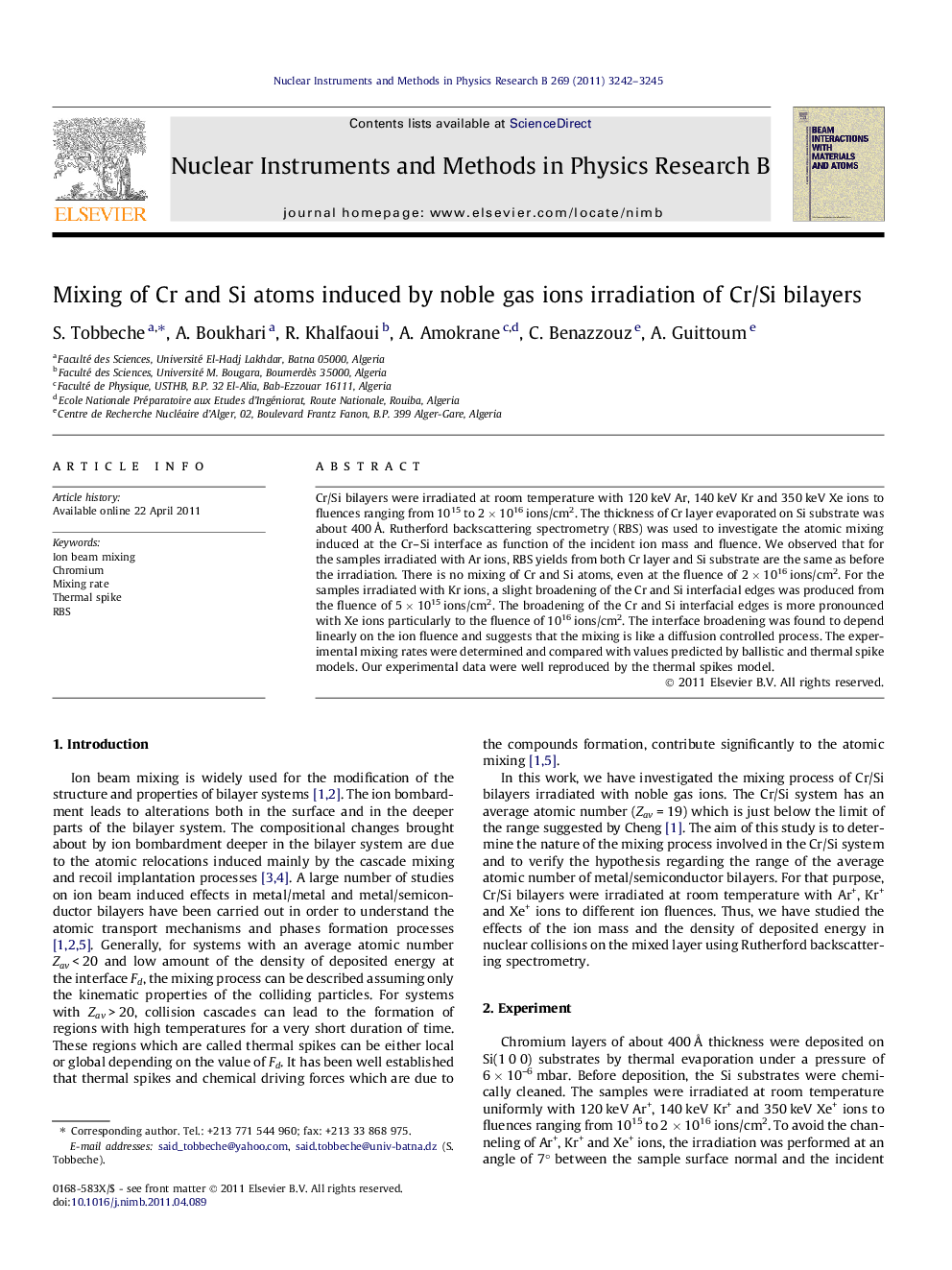| Article ID | Journal | Published Year | Pages | File Type |
|---|---|---|---|---|
| 1683027 | Nuclear Instruments and Methods in Physics Research Section B: Beam Interactions with Materials and Atoms | 2011 | 4 Pages |
Cr/Si bilayers were irradiated at room temperature with 120 keV Ar, 140 keV Kr and 350 keV Xe ions to fluences ranging from 1015 to 2 × 1016 ions/cm2. The thickness of Cr layer evaporated on Si substrate was about 400 Å. Rutherford backscattering spectrometry (RBS) was used to investigate the atomic mixing induced at the Cr–Si interface as function of the incident ion mass and fluence. We observed that for the samples irradiated with Ar ions, RBS yields from both Cr layer and Si substrate are the same as before the irradiation. There is no mixing of Cr and Si atoms, even at the fluence of 2 × 1016 ions/cm2. For the samples irradiated with Kr ions, a slight broadening of the Cr and Si interfacial edges was produced from the fluence of 5 × 1015 ions/cm2. The broadening of the Cr and Si interfacial edges is more pronounced with Xe ions particularly to the fluence of 1016 ions/cm2. The interface broadening was found to depend linearly on the ion fluence and suggests that the mixing is like a diffusion controlled process. The experimental mixing rates were determined and compared with values predicted by ballistic and thermal spike models. Our experimental data were well reproduced by the thermal spikes model.
